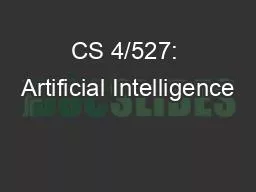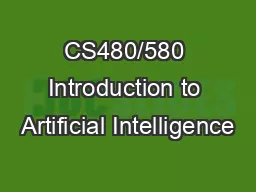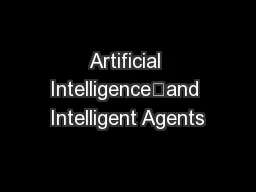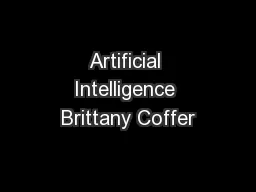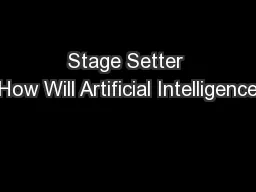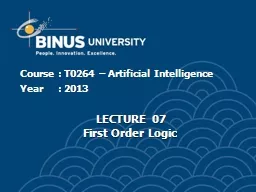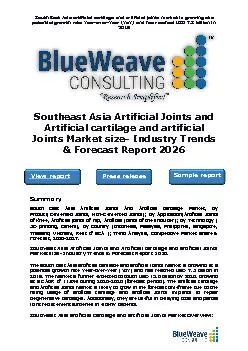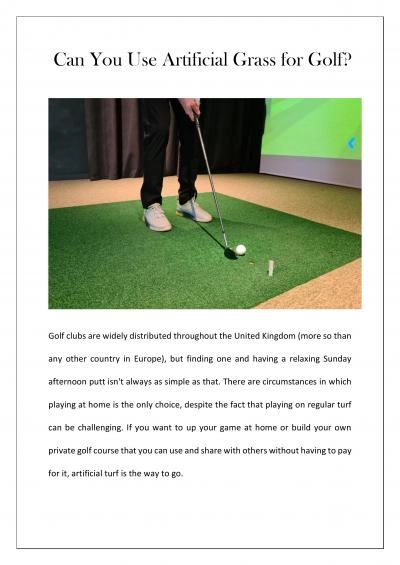PPT-CS 4/527: Artificial Intelligence
Author : unisoftsm | Published Date : 2020-06-20
Deep Learning Instructor Jared Saia University of New Mexico These slides created by Dan Klein Pieter Abbeel Anca Dragan Josh Hug for CS188 Intro to AI at UC
Presentation Embed Code
Download Presentation
Download Presentation The PPT/PDF document "CS 4/527: Artificial Intelligence" is the property of its rightful owner. Permission is granted to download and print the materials on this website for personal, non-commercial use only, and to display it on your personal computer provided you do not modify the materials and that you retain all copyright notices contained in the materials. By downloading content from our website, you accept the terms of this agreement.
CS 4/527: Artificial Intelligence: Transcript
Download Rules Of Document
"CS 4/527: Artificial Intelligence"The content belongs to its owner. You may download and print it for personal use, without modification, and keep all copyright notices. By downloading, you agree to these terms.
Related Documents

